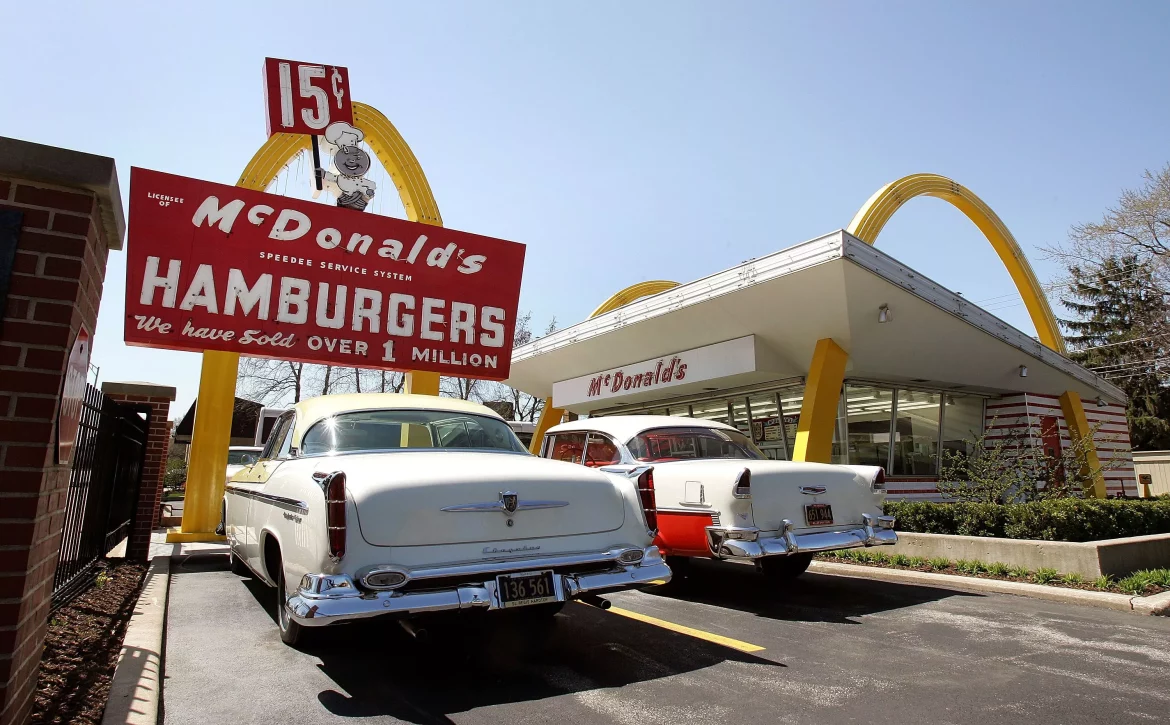The Chicken Big Mac, a variant of the iconic Big Mac that swaps beef patties for chicken patties, has been a topic of much discussion and speculation among McDonald’s enthusiasts. Although it made waves during its limited-time launches in various markets, McDonald’s eventually decided to pull the plug on this menu item. This article delves into the reasons behind this decision, exploring market dynamics, customer feedback, operational challenges, and strategic considerations.
Why Did McDonald’s Stop The Chicken Big Mac?
Market Response and Customer Feedback
The initial response to the Chicken Big Mac was promising. Many customers were excited to try a new twist on a classic favorite. In markets like the UK, it even led to a temporary spike in sales and significant social media buzz. However, not all feedback was positive. While some praised the novelty and flavor, others felt that the chicken patties did not live up to the standard set by the beef patties in the original Big Mac.
Customer reviews often highlighted issues such as:
Texture and Taste: Some customers found the chicken patties to be less satisfying in terms of texture and taste compared to the beef patties. The combination of chicken with the traditional Big Mac sauce and ingredients did not resonate with everyone.
Consistency: There were reports of inconsistent quality, with some customers experiencing dry or overcooked patties.
Comparisons to Existing Products: Many customers felt that the Chicken Big Mac was not sufficiently different from other existing chicken sandwiches offered by McDonald’s.
See Also:McDonald’s Franchise
Operational Challenges
Introducing a new menu item, especially one as high-profile as the Chicken Big Mac, comes with its own set of operational challenges. McDonald’s, with its vast and standardized supply chain, faced several issues:
Ingredient Supply and Quality Control: Ensuring a consistent supply of high-quality chicken patties was crucial. Any disruption or variation in quality could negatively impact customer experience.
Kitchen Workflow: Adding a new item like the Chicken Big Mac required adjustments in kitchen workflows. This included additional training for staff and potential delays in service during peak hours.
Cost Management: The production costs associated with the Chicken Big Mac, including sourcing, preparation, and marketing, needed to justify the item’s profitability.
Strategic Considerations
McDonald’s strategic decisions are guided by extensive market research and a focus on long-term profitability. The discontinuation of the Chicken Big Mac can be attributed to several strategic factors:
Core Menu Focus: McDonald’s core menu items, such as the original Big Mac, Quarter Pounder, and McChicken, have consistently driven sales. Maintaining focus on these high-performing items is essential for sustaining profitability.
Innovation and Limited-Time Offers: McDonald’s frequently introduces limited-time offers (LTOs) to create excitement and drive short-term sales. The Chicken Big Mac served its purpose as an LTO, generating buzz without needing to become a permanent fixture.
Consumer Preferences: Consumer preferences and eating habits are constantly evolving. McDonald’s regularly reviews its menu to align with current trends and customer demands. The mixed reception of the Chicken Big Mac suggested it was not a perfect fit for the broader market.
Competitive Landscape
The fast-food industry is highly competitive, with numerous players vying for market share. McDonald’s needs to continuously innovate while also keeping an eye on competitors. The Chicken Big Mac faced stiff competition from both within McDonald’s own product lineup and from other fast-food chains offering popular chicken sandwiches.
Health and Nutrition Concerns
Health and nutrition trends also play a significant role in menu decisions. The Chicken Big Mac, while offering an alternative to beef, did not necessarily align with the increasing consumer demand for healthier options. With growing awareness about nutrition, many customers are seeking meals that offer better health benefits, potentially making the Chicken Big Mac less appealing.
Marketing and Branding Implications
The marketing and branding strategy of McDonald’s is centered around its most iconic products. Introducing too many variations can dilute the brand’s identity. By discontinuing the Chicken Big Mac, McDonald’s ensured that its brand remained focused on its core offerings that have defined its legacy.
Lessons Learned and Future Prospects
The Chicken Big Mac experiment provided valuable insights for McDonald’s:
Consumer Insights: Understanding customer preferences and feedback is critical. The mixed reactions to the Chicken Big Mac highlighted the importance of aligning new products with customer expectations.
Operational Efficiency: Introducing new items requires careful consideration of operational impacts. Streamlining operations and maintaining quality control are essential for success.
Innovation Strategy: McDonald’s will likely continue to innovate and test new products. The lessons learned from the Chicken Big Mac can guide future innovations, ensuring they are better aligned with market demands and operational capabilities.
Conclusion
The decision to discontinue the Chicken Big Mac was influenced by a combination of factors, including market response, operational challenges, strategic focus, and competitive dynamics. While it generated initial excitement, the long-term viability of the product did not align with McDonald’s strategic goals. By focusing on its core strengths and leveraging insights from this experience, McDonald’s continues to adapt and thrive in the ever-evolving fast-food landscape.
The Chicken Big Mac’s story is a testament to the importance of balancing innovation with strategic coherence, ensuring that each menu addition enhances the brand’s overall value proposition.


